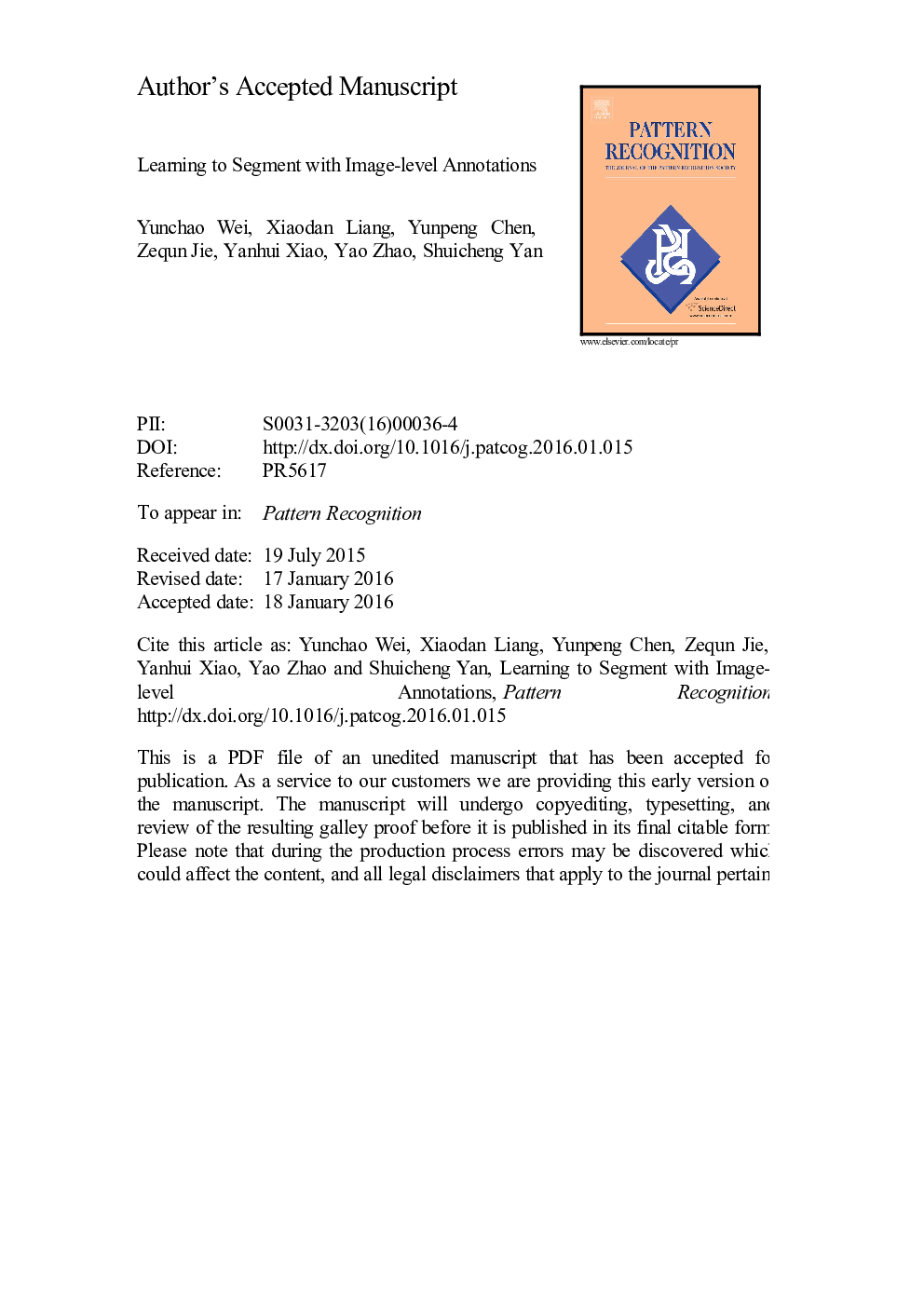| Article ID | Journal | Published Year | Pages | File Type |
|---|---|---|---|---|
| 4969951 | Pattern Recognition | 2016 | 28 Pages |
Abstract
Recently, deep convolutional neural networks (DCNNs) have significantly promoted the development of semantic image segmentation. However, previous works on learning the segmentation network often rely on a large number of ground-truths with pixel-level annotations, which usually require considerable human effort. In this paper, we explore a more challenging problem by learning to segment under image-level annotations. Specifically, our framework consists of two components. First, reliable hypotheses based localization maps are generated by incorporating the hypotheses-aware classification and cross-image contextual refinement. Second, the segmentation network can be trained in a supervised manner by these generated localization maps. We explore two network training strategies for achieving good segmentation performance. For the first strategy, a novel multi-label cross-entropy loss is proposed to train the network by directly using multiple localization maps for all classes, where each pixel contributes to each class with different weights. For the second strategy, the rough segmentation mask can be inferred from the localization maps, and then the network is optimized based on the single-label cross-entropy loss with the produced masks. We evaluate our methods on the PASCAL VOC 2012 segmentation benchmark. Extensive experimental results demonstrate the effectiveness of the proposed methods compared with the state-of-the-arts.
Related Topics
Physical Sciences and Engineering
Computer Science
Computer Vision and Pattern Recognition
Authors
Yunchao Wei, Xiaodan Liang, Yunpeng Chen, Zequn Jie, Yanhui Xiao, Yao Zhao, Shuicheng Yan,
